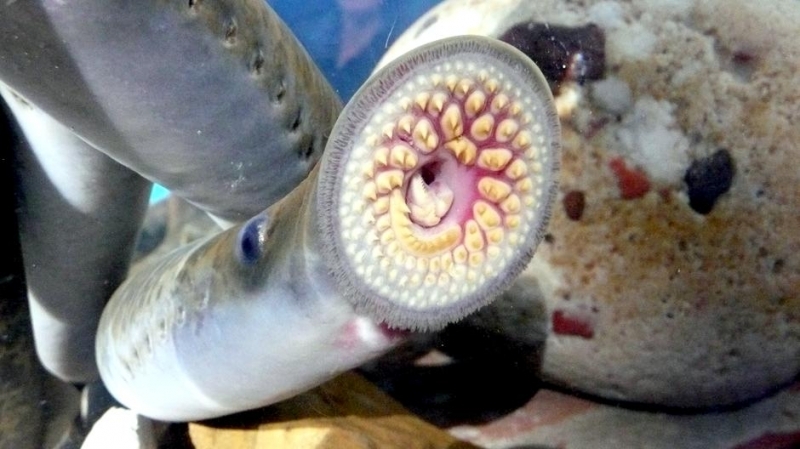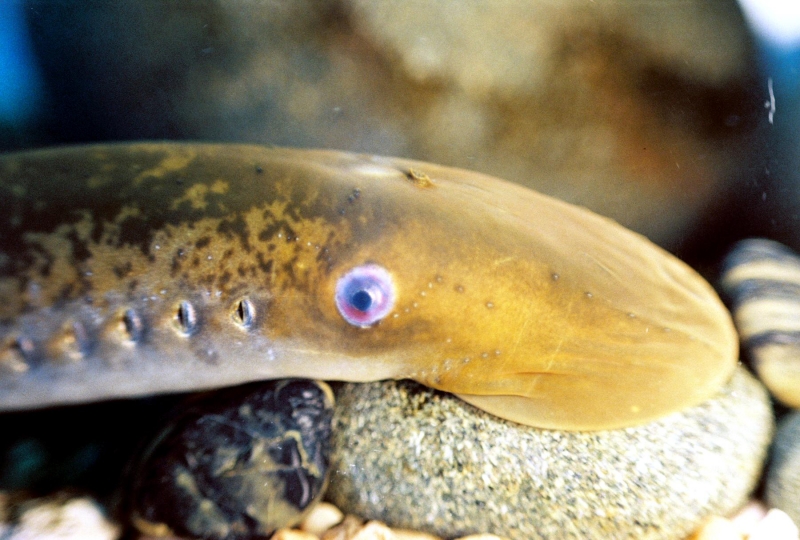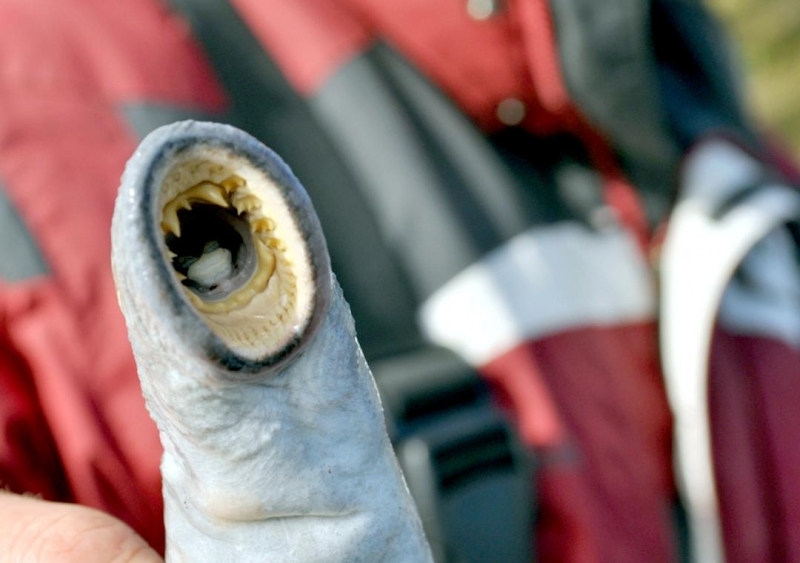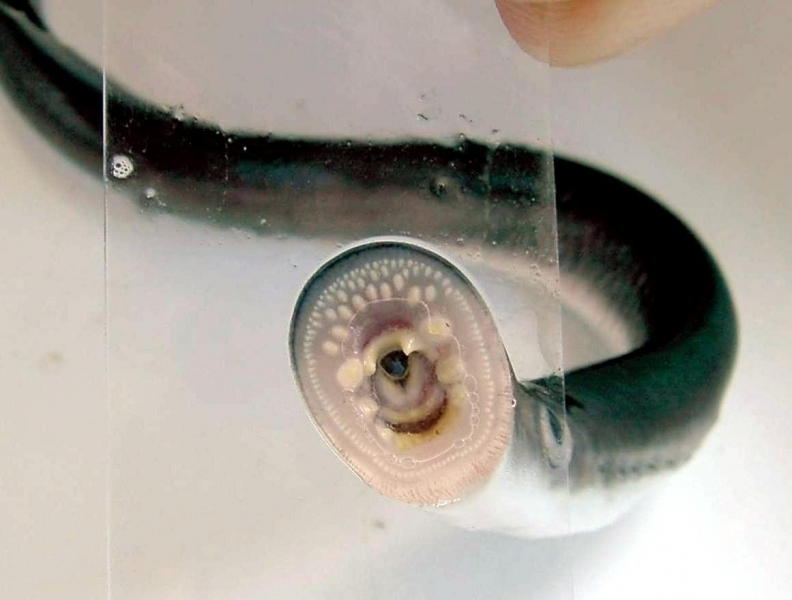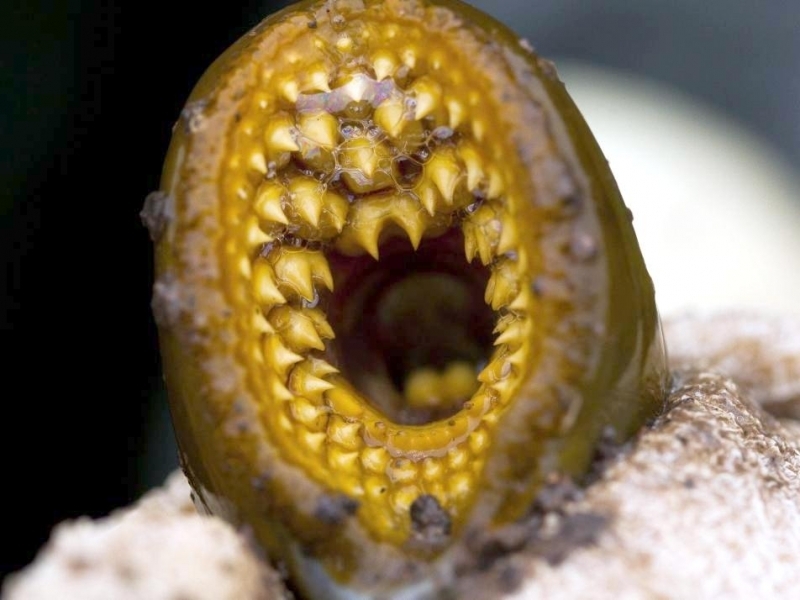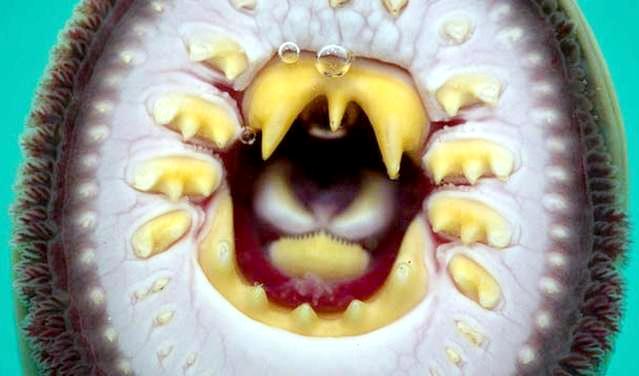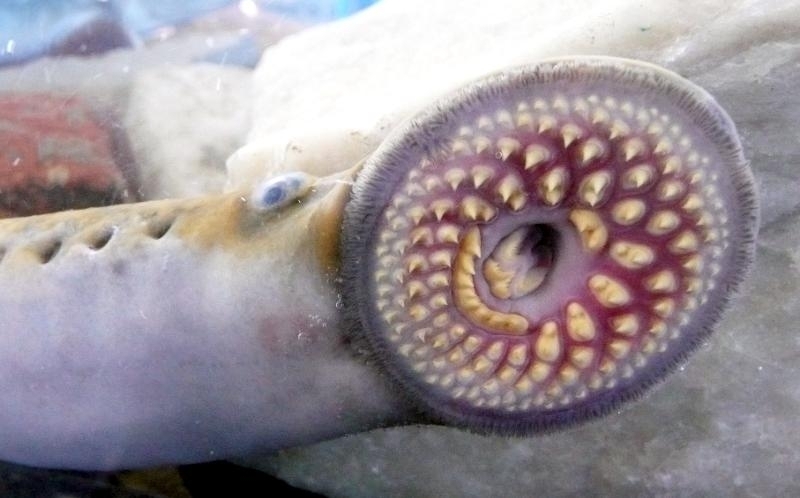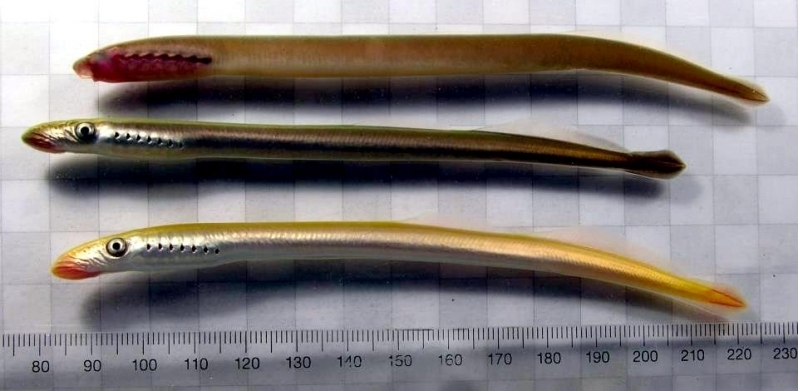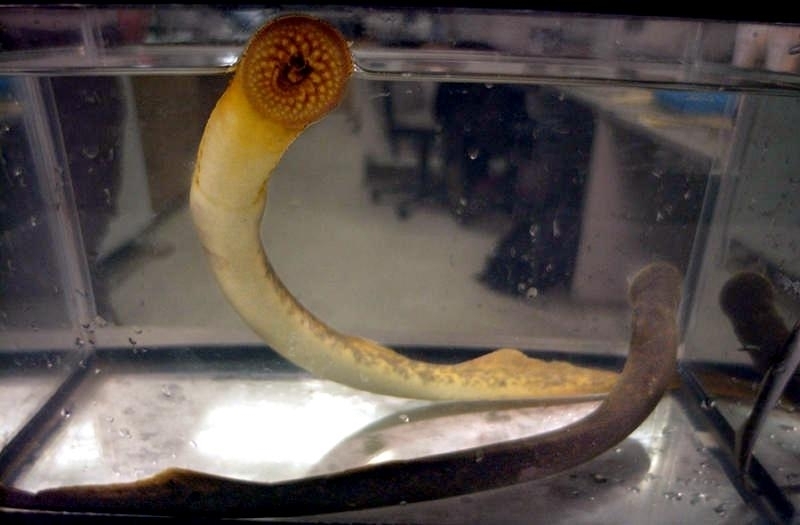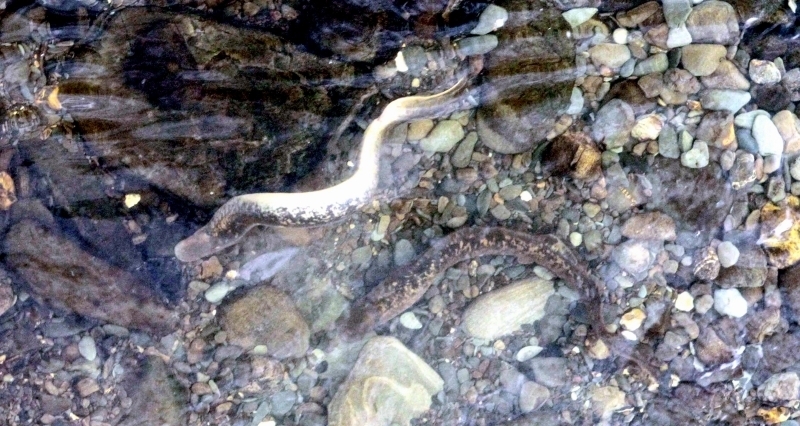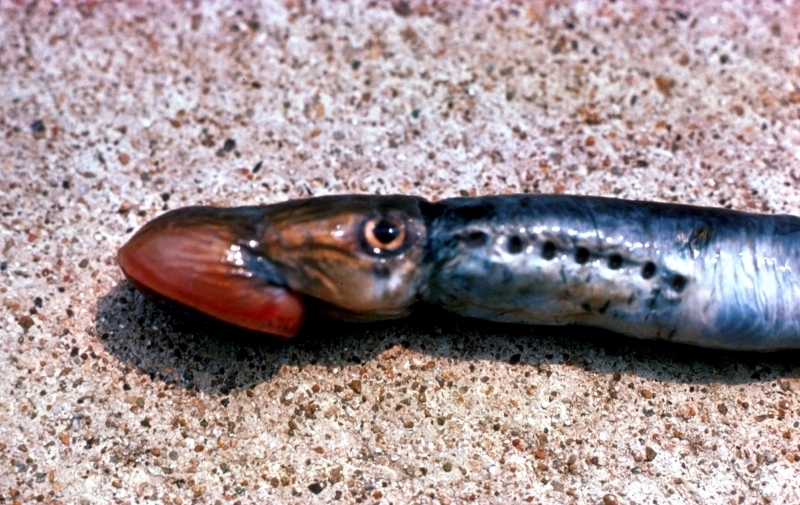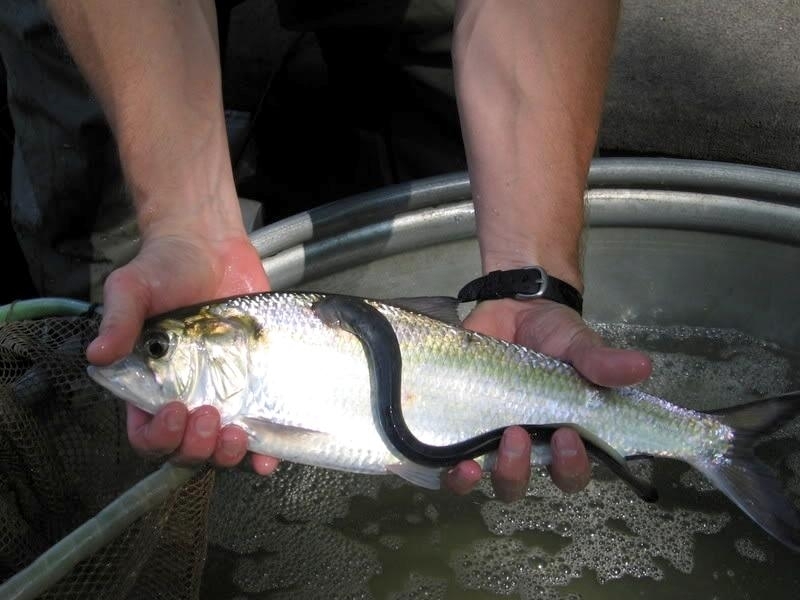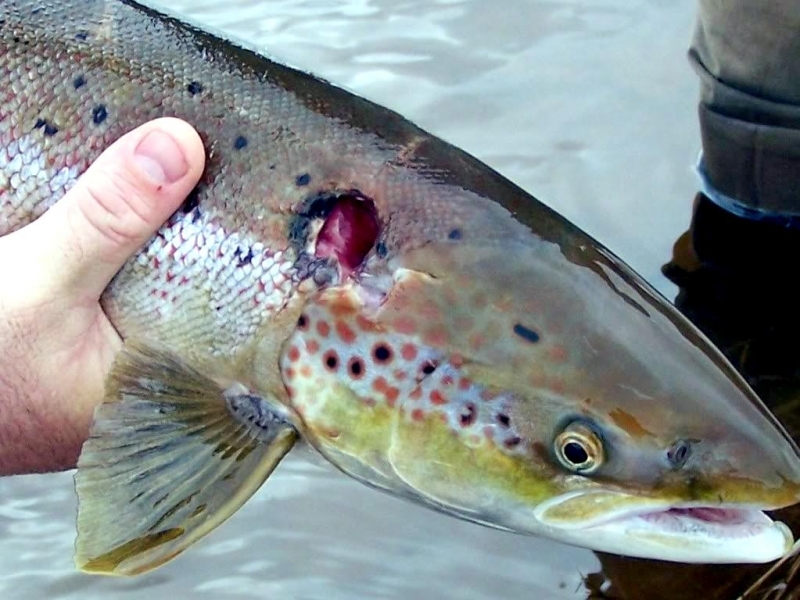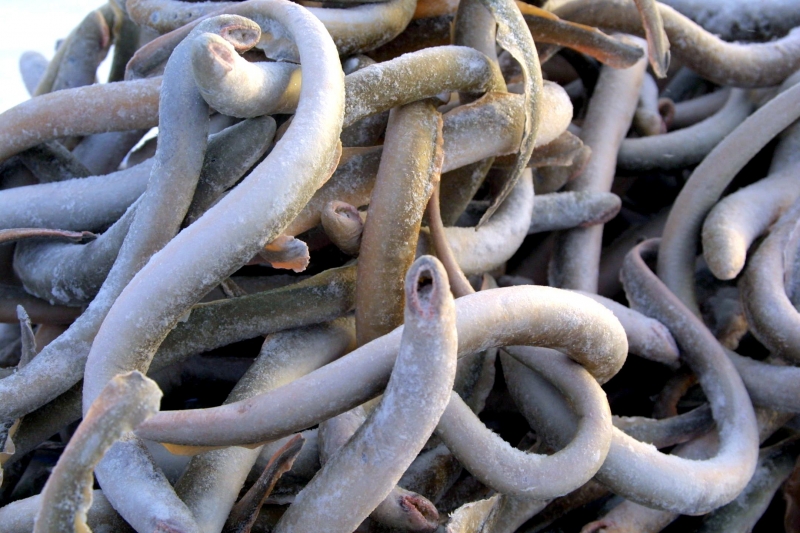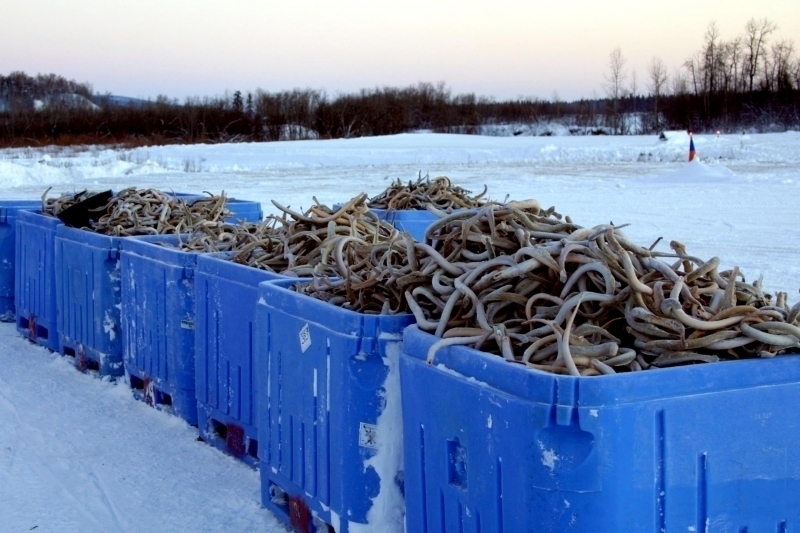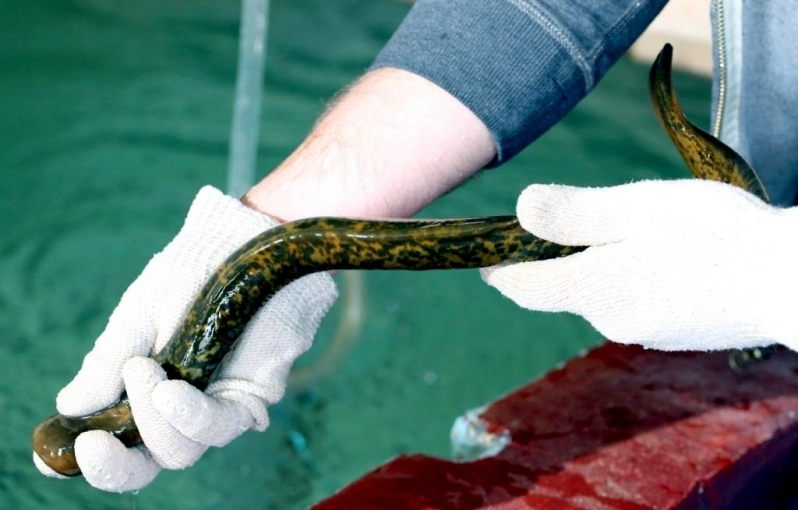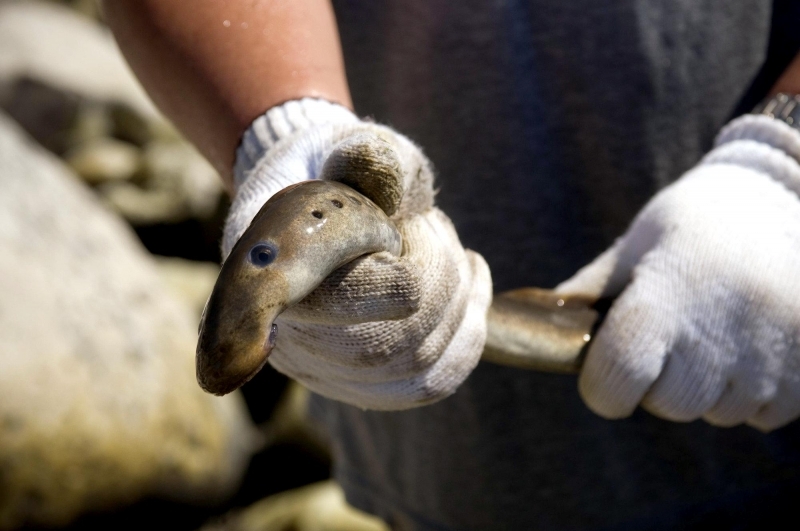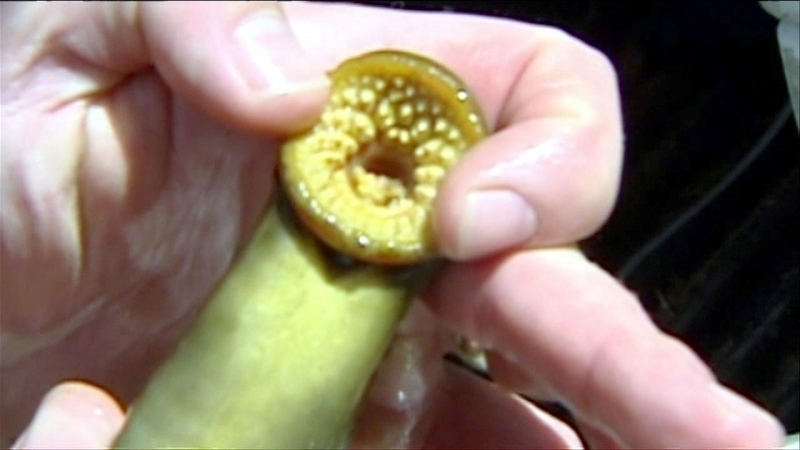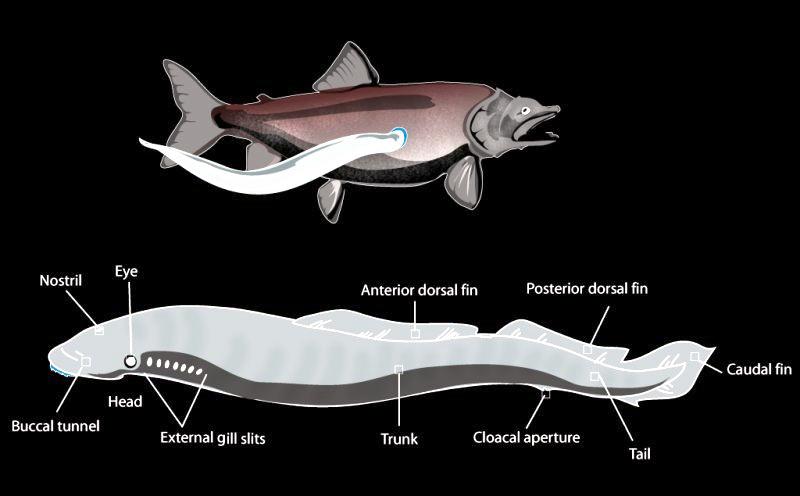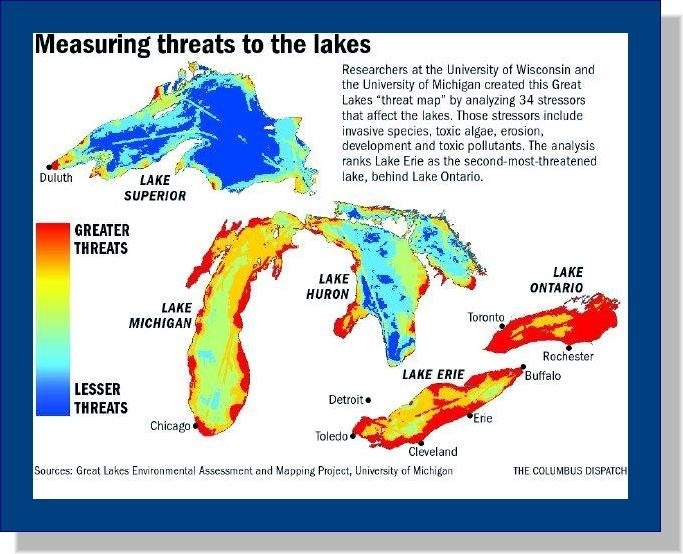“Petromyzon marinus”
Lamprey Eels are members of an ancient family of “jawless fishes” that were around before the time of the dinosaurs. They are 12-20 inches long and eel-like. They have dark brown to black backs and light yellow to pale brown bellies. Look for a feathery fin from their midsection down and under the tail. Their mouth is circular with circular rows of teeth. They have large reddish eyes. The common name “Lamprey” is probably derived from Latin lampetra, which means “stone licker” (lambere “to lick” + petra “stone”). Lamprey Eels are parasites as adults and use their raspy disc-shaped mouth full of teeth to strike and hold fast to fish. They make holes in the sides of their victims and feed on blood and body fluids. They stay attached for hours, days or even weeks. Large fish will most likely survive a Lamprey Eel attack with just a circular scar left on their side. Small fish may die immediately from the attack or will die from an infection from the large sucking wound. Lamprey Eels attach themselves to other fish and suck on their blood & body fluids leaving rounded scars on the fish. When they first arrived on the Great Lakes scene, they killed large numbers of predatory sport fish. People began to notice the lack of large fish and the scars on others. Lamprey Eels preyed on Whitefish, Lake Trout and Chub populations in Lake Superior & Lake Michigan. The Lamprey Eel invasion made it hard on the people who fished the Great Lakes to make a living.
A single Lamprey Eel can upset an ecosystem & food chain by eating an estimated 40 pounds of fish or more in its lifetime. Multiply that times 22,000 Lamprey Eels found in just 1 river and you have a lot of dead fish. Because of lower large fish populations, small fish like the Alewife were able to increase in numbers. Alewives are also an invader species which compete with native fish for food & habitat. Invaded territories include all of the Great Lakes and clear, cold streams throughout the Great Lakes region. Construction and improvements on the Erie & Welland Canals (between Lake Ontario and Lake Erie) around 1921 allowed Lamprey Eels to get through the canals to the next lake.
Arrival Year in the Great Lakes
1932 – Lake Huron
1921 – Lake Erie
1835 – Lake Ontario
1936 – Lake Michigan
1938 – Lake Superior
Lamprey Eels will lay over 100,000 eggs when spawning. Lampricides (poison) was first used in the late 1950’s to kill larval Lamprey Eels. The chemical was not harmful to humans and didn’t affect many plants, invertebrates, fish or waterfowl populations. The chemical worked, but it was costly and did kill some young fish. In 1958, marine biologists estimated that the Brule River in Wisconsin produced over 22,000 Lamprey Eels each year. The Great Lakes Fishery Commission said that this population made up 30-50 percent of all the Lamprey Eels captured on American tributaries. In 1986, DNR fish managers, technicians & engineers designed a new Lamprey barrier which let fish migrate through to spawn, but captured the Lamprey Eel. On that first day, 2,000 Lampreys were caught. The new barrier was expected to reduce the number of Lamprey Eels above the barrier to nearly zero. Today, marine biologists are still looking for ways to stop the spread of Lamprey Eels in lakes, streams & rivers. The Lamprey Eel population is under control, but they are still a threat to aquatic ecosystems. Several million dollars are spent each year on these control methods. Native predatory fish like the Whitefish & Lake Trout, have been restocked by fisheries professionals to help maintain a healthy level of these species.




